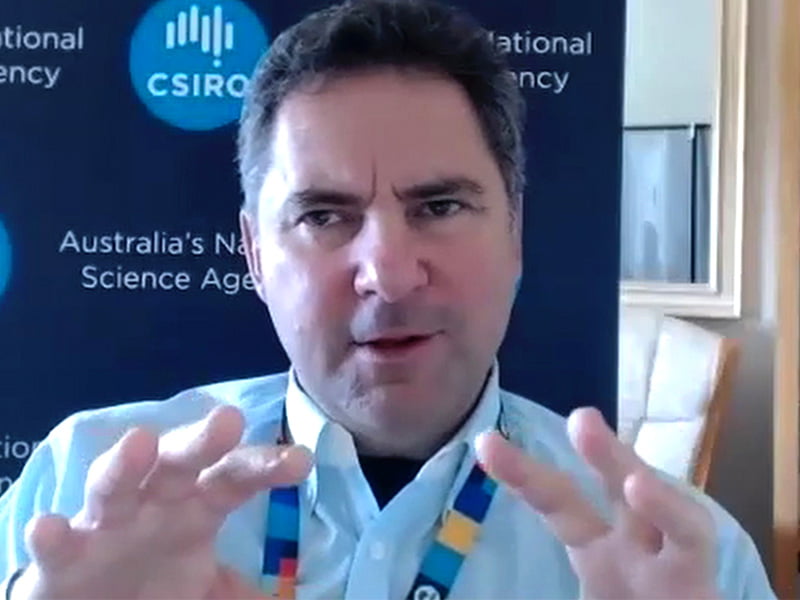It’s an uncomfortable truth in Australia that it took a pandemic for us to turn to science for solutions, after decades of comfortable economic growth on the back of the resources sector.
As economic conditions now begin to tighten, we run the risk of once again turning away from science and undoing all the progress we’ve made towards creating more solutions from science – progress that was accelerated but COVID-19 but built on a foundation of increasing commercialisation efforts in recent years.
When we turned to science at the outset of COVID-19, we found not only answers to understanding and fighting the pandemic, but also ways of working better together and ways of reinventing and creating new industries that grew new jobs as well.
For example, Australia manufactured 50 million doses of one of the world’s first vaccines by using science to solve a seemingly impossible challenge of sovereign supply.

On Thursday I am joined by federal Minister for Industry and Science Ed Husic to officially open CSIRO’s National Vaccine and Therapeutics Lab in Melbourne, which is a flasher version of what we created to scale up that first COVID-19 vaccine in our time of crisis. But like any good entrepreneur, we created it well before the crisis because we had a clear market vision that drove us to solve a problem before it was upon us.
The new facility will supercharge our ability to produce vaccines and therapeutics right here in Australia.
Biomedical manufacturing researchers will work alongside industry partners on vaccine candidates and drug discoveries to safely and precisely scale-up the products ready for clinical trials.
It will strengthen our ability to translate and commercialise research, contributing to bridging that valley of death that so often prevents our world-class research being turned into solutions from science that create new industries and jobs both locally and globally.
The valley of death is where startups fail for lack of investment to see them through product development, scale up, distribution, and all the other hurdles they have to jump before they can learn to feed themselves. That valley is wider and deeper for startups from science.
In Australia, the knowledge that so many of our startups wither and die in that valley means that, rather than risk the valley of death, our best ideas go overseas to seek investment and support to grow, and we buy back their products once someone else has taken the risk for us and taken the value from us.
It’s gotten to the points that more often than not, it’s the fear of the valley of death that stops us even trying to leap across it.
In recent years, we’ve been making steady progress on building bridges across that valley of death that give me great hope for Australia’s future – as long as short-term economic cycles don’t prove more powerful than the long-term benefit that science-driven innovation can deliver.
Two startups from science in particular have leapt across the valley to early commercial success: one is a graduate of CSIRO’s ON program and the other is a portfolio company of CSIRO’s Innovation Fund, managed by Main Sequence.
FutureFeed was in one of the earliest cohorts to go through ON, looking for ways to commercialise research that found adding a seaweed supplement to livestock feed can significantly reduce their methane emissions.
More than 3,000 people have participated in ON programs, with more than 60 companies formed by participating teams. The program includes an intensive customer-focused accelerator to develop startups, preparing them for the leap across the Valley of Death.
After ON, FutureFeed did something we don’t often see in Australia, it compelled local Australian companies to fund its seemingly impossible idea, including retail giant and supermarket chain Woolworths, commodities handler GrainCorp, agrifood group Harvest Road, and accelerator operator AGP Sustainable Real Assets–Sparklabs Cultiv8 Joint Venture.
Earlier this year, FutureFeed celebrated a major milestone with the sale of its first products to livestock feed suppliers, and now have licensees so far in Australia, New Zealand, the US and in Europe.
Plant-based protein company v2food was created with investment from the CSIRO Innovation Fund, as well as research and facilities from CSIRO and a pathway to market through Competitive Foods, owner of Hungry Jacks.
In the first two years, the company raised $182 million, and today, v2food products are in Hungry Jacks stores, major supermarkets and in-flight meals, with plans underway to export to Asia.
By harnessing CSIRO’s market vision and venture investment, we can de-risk investment opportunities for corporates in Australia, like Competitive Food, to invest in deep-tech startups that would otherwise struggle to find a way across the valley of death.
FutureFeed and v2food are not flukes; there could be many more like them if we continue to bridge the valley of death.
But if we let short-term economic conditions spook us, we’ll lose our opportunity and it will take decades to make up the ground. By that time, we may well have realised the future predicted by our Australian National Outlook in 2019 – except we’ll have taken the road to a slow decline instead of towards a bright outlook powered by innovation.
Dr Larry Marshall is the chief executive officer at CSIRO, Australia’s national science agency
Do you know more? Contact James Riley via Email.
